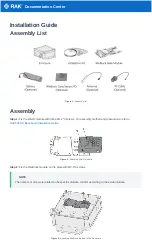
Flight Management System (FMS) for the Agusta AW139/AB139 Helicopter
A28--1146--181
REV 3 Mar 2009
Navigation
6-56
Honeywell International Inc. Do not copy without express permission of Honeywell.
Approach
Once an approach is selected, the pilot must check and/or monitor
many things during the approach. The following describes those items:
D
Before starting a nonprecision approach transition or approach, the
crew must review the published approach procedure and verify the
FMS waypoints and altitude restrictions.
D
Before starting a nonprecision approach transition that is flown by
the FMS, verifying the transition is cleared by air traffic control (ATC)
is important. Selecting the transition fix is normally the path to
selecting the actual transition.
D
The approach (APRCH) annunciator must light 2 NM before the final
approach fix. The annunciator can remain lit for the remainder of the
approach. This is a positive cue to the flight crew that the sensor
configuration is correct and sensor integrity is within limits for the
approach. The approach annunciator is not lit during
localizer--based approaches since the FMS is not authorized to be
coupled during localizer approaches. The degraded (DGRAD)
annunciator must be off throughout the approach. When the
DGRAD annunciator turns on, the FMS must not be used for the
remainder of the approach. The flight crew can continue the
approach using raw data or conduct the missed approach
procedure.
D
When FMS VNAV guidance is used on the approach, verify the
approach plate waypoint altitudes are shown on the FMS MCDU.
Verify that the altitude selector is set to the minimum descent
altitude (MDA).
D
Industry wide standards for database information are currently
inconsistent on many approaches. Some vertical paths are defined
to 50 feet above the runway. Others do not arrive at MDA until at the
missed approach point (MAP). Some approaches give vertical
guidance below the published MDA and some vertical paths differ
from the VASI/PAPI angles.
D
Since charts are continually updated, the FMS waypoint names can
not exactly match the chart names. Additionally, there are
differences between courses displayed on the chart and those
displayed on the MCDU and EFIS (electronic flight instrument
system). These differences are the result of changes in magnetic
variation and are normally less than 2 degrees. Verify possible
changes before starting an approach.
Summary of Contents for FMZ Series
Page 3: ......















































